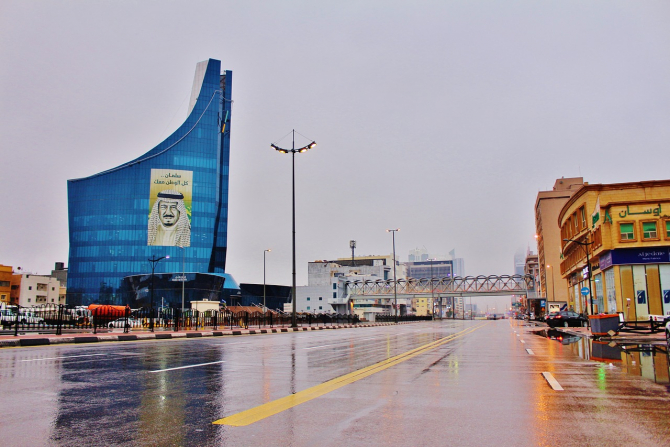In its Pre-Budget Statement 2019 the Saudi Ministry of Finance has indicated that the Kingdom plans to increase government spending by more than 7% in 2019. Based on the current plans, Riyadh will spend around 1.106 trillion riyals ($295 billion) next year, in comparison to 1.030 trillion riyals in 2018. The official move to increase government spending is to boost still struggling economic growth, partly hurting for current low oil prices. The budget plans show a further increase of investments in the private sector, the implementation of Saudi Vision 2030, while addressing a stricter financial policy, involving higher taxes, including an expat levy. To cushion the financial hardship of Saudi citizens, especially government employees, military and low-income groups, Saudi King Salman also has stated that the handout package will continue by the government.
Just before the presentation of the Pre-Budget Statement 2019, a royal decree has been announced by King Salman to continue the disbursement of monthly allowances for the coming years to mitigate higher costs of living for Saudis. The latter is a continuation of the same policy in 2018, which had positive results for private spending in H2 2018. The Royal Decree stated that state employees and military personnel will get around 1,000 riyals per months extra to counter increased cost of living. Pensioners and social security beneficiaries will receive an additional 500 riyals each. These handouts, which have been partly criticized by international financial analysts and organizations such as the WB and IMF, are partly meant to offset the increases in the cost of energy and electricity prices as well as the 5 per cent introduction of VAT this year. At the same time, they are creating a financial buffer during 2019 for these groups not to be hit too hard by a more widespread tax regime implementation and expected reduction of energy and water subsidies. The Pre-Budget indicated that further changes to subsidies are going to be implemented, partly to remove pressure on the government budget and to reduce overall waste.
At present, another major driver for these financial handouts can be identified. With a still struggling Saudi Vision 2030, as effects of the giga projects such as Qiddiya or NEOM are only going to be felt after 5-10, possible opposition is still waiting for some weaknesses in the armor of the King and Crown Prince Mohammed bin Salman. A continuation of the historical financial Wasta-system or rentier state approach, in which revenues are being disbursed and redistributed to control and mitigate opposition, these practices are to continue at present for sure. Financial and economic assessments all point to a need to remove these disbursements or handouts to push the Saudi economy into the 21st Century. Pushing however for a hard break with the past, possible existing opposition in Saudi Arabia (as exist still even in the parts of the Royal Family), combined with financial and budget crisis of large parts of the government and military would threaten stability directly. By continuing the historic financial pact between the House of Saud and its population, redistribution of wealth to counter financial hardship on the streets is still part of life.
Still, the current 2019 budget is the most ambitious one since years. With a budget increase of around 7 percent, the Saudi government will do its utmost to reap the rewards of a projected 2.1 percent economic growth in 2018 and an expected 2.3 percent in 2019. Main growth at present should be coming from the non-oil economic sectors, being supported by a major growth of private sector activity. Part of the additional funding by the government will be targeting these specific sectors in 2019.
In the same Pre-Budget Statement, the MOF stated that the diversification of the Saudi economy and stimulation of the private sector is necessary to achieve sustainable economic growth, employment, fiscal sustainability and fiscal balance by 2023. With still not having the tools to mitigate or counter effectively the overall negative impact of fluctuating oil prices, the Kingdom is strengthening its resolve to implement a stringent fiscal discipline, as presented in the Fiscal Balance Program. The underlying strategy is to quell overall budget deficits, increase non-oil revenues and reduce subsidies. A full scale fiscal balance is expected by 2023.
With GPD growth in 2019 expected to reach 2.3 percent, or 2.4 percent in 2021, the latter needs to be backed by structural economic reforms. Saudi Vision 2030’s success necessitates investors and financial confidence, which is currently still weak.
(Source: Ministry of Finance)
To support all, a further reduction of the overall deficit is needed. The MOF expects a deficit of 4.1 percent of GDP in 2019, but reaching zero (or fiscal balance) by 2023. To shore up investors confidence, the Saudi government, as presented in the National Transformation Program in 2016, has set a ceiling for public debt as a percentage of GDP at 30%. The latter is much lower than debt levels in most G-20 countries.
(Source: Ministry of Finance)
The Pre-Budget information is extensive, but still lacks large chunks of information. As OPEC’s largest oil producer, and main oil products exporter, the budget is largely based on a certain oil price level. The latter still decides most of the government revenues, even in the next decades. No indications or specific figures have been given to assess the other projected income or spending strategies at present. In how far the Kingdom will be able to reach the preliminary indicated total revenues of $260.67 billion (SR 978 billion) in 2019, which is an increase of 11% compared to the 2018 forecasts, is unclear. It changes the picture dramatically if higher crude oil prices are needed than the current price levels on the global oil market.
Looking at former budgets it is clear and rational to expect that higher crude oil prices are needed to reach the budget deficit levels predicted. Taking this into account, Riyadh will be a strong supporter of a stabilization of the oil market, with maybe additional production cuts in future to shore up prices substantially. To reach maybe levels of $75-80 per barrel, another 400,000-600,000 bpd needs to be taken out of the market. If not, fledgling oil prices will not only cut into government revenues, but increase deficits dramatically and lower overall investors’ confidence at the same time. Economic and financial stability is needed also to stabilize the current internal House of Saud issues.
Fiți la curent cu ultimele noutăți. Urmăriți DCBusiness și pe Google News
Ţi s-a părut interesant acest articol?
Urmărește pagina de Facebook DCBusiness pentru a fi la curent cu cele mai importante ştiri despre evoluţia economiei, modificările fiscale, deciziile privind salariile şi pensiile, precum şi alte analize şi informaţii atât de pe plan intern cât şi extern.
 EUR = 5.0920
EUR = 5.0920  USD = 4.3235
USD = 4.3235  GBP = 5.8401
GBP = 5.8401  CHF = 5.4794
CHF = 5.4794  XAU = 620.0806
XAU = 620.0806 













































 1 AUD = 2.8989 RON
1 AUD = 2.8989 RON  1 DKK = 0.6818 RON
1 DKK = 0.6818 RON  1 CAD = 3.1599 RON
1 CAD = 3.1599 RON  1 HUF = 0.0131 RON
1 HUF = 0.0131 RON  1 JPY = 0.0277 RON
1 JPY = 0.0277 RON  1 NOK = 0.4305 RON
1 NOK = 0.4305 RON  1 SEK = 0.4717 RON
1 SEK = 0.4717 RON  1 BTC = 379758.47RON
1 BTC = 379758.47RON  1 ETH = 12926.36RON
1 ETH = 12926.36RON  1 LTC = 338.40RON
1 LTC = 338.40RON  1 XRP = 8.06RON
1 XRP = 8.06RON 





